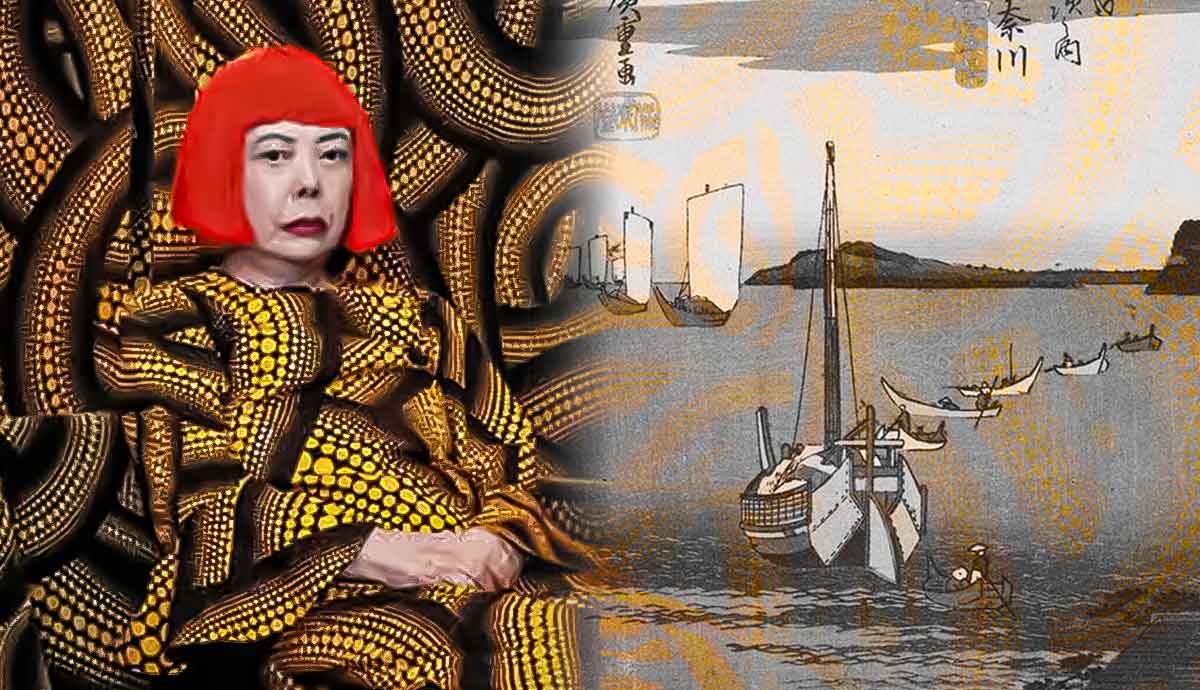
From the ceilings of Renaissance churches to the white cube, the spaces where art is exhibited have changed and evolved alongside the artworks they hold inside. Outdoor art sites have developed a devoted crowd in public and artists, connecting art and nature and allowing greater freedom for expansive and immersive artistic experiences. As such, open-air museums have gained their own space in the contemporary art world. Here are ten of the most incredible open-air museums in the world for those who enjoy being immersed in nature and art.
1. Oficina Francisco Brennand – Pernambuco, Brazil

The fascinating Oficina Francisco Brennand is a museum, garden, and architectural compound that served as the lifelong workshop of multimedia innovator Francisco Brennand. Invoking an ancient time when art and architecture were never apart, the Brennand Workshop encompasses forest gardens, sculpture plazas, fountains, domes, chapels, cinema, temples, and studios. It’s easy to understand why this open-air museum is called “The Citadel,” populated with Francisco Brennand’s cosmological and magnificent constructions of glass and ceramic. Oficina Brennand continued to operate as a collective workshop and open-air museum after Franciso Brennand’s passing in 2019. It exhibits the works of Brennand and other artists from the 2000s.
2. The Tarot Garden – Tuscany, Italy

The Tarot Garden in Tuscany is an open-air immersive psychedelia straight from the mind of groundbreaking artist Niki de Saint-Phalle. Inspired by Tarot and Antoni Gaudís Park Güell in Barcelona, it stands somewhere between a museum, an art park, and a site-specific installation. Saint-Phalle thought of the open-air museum in the 1970s, purchased the land in 1979, and opened it to the public in 1998. Even from afar, visitors can see the monstrously scaled figures of the Major Arcana rise above the woods and hills of Tuscany in Saint-Phalle’s signature exuberant aesthetic. The artworks are built with steel plaster and finished with colorful mosaics. They create an esoteric pathway, sharing space with Saint Phalle’s Nanas and works by other artists like Jean Tinguly, Pierre Marie Lejeune, Marina Karella, and more.
3. Benesse Art Site – Naoshima, Japan

Benesse Art Site is not a site so much as a philosophy. It is not one space but a proliferation of art spaces, artworks, and art paths that have slowly taken root in the islands of Naoshima, Teshima, and Inujima, off the coast of Japan. It all started with Benesse House, a series of buildings hosting hotels and contemporary art collections, inaugurated in 1992 and designed by the master of concrete, Tadao Ando. Ando’s architecture is a calling card of the Benesse Art Site, perhaps only surpassed by Yayoi Kusama’s pumpkin on the beach. Over the years, numerous other artworks have been created in Naoshima’s beaches, plazas, and gardens, as well as in Teshima and Inujima. Unlike any other place, Naoshima has evolved into a place where art and life can’t part, the whole of the island an open-air museum.
4. Goldwell Open Air Museum – Nevada, United States

There are ghosts in the ghost town of Rhyolite in the Nevada Desert. Specifically, there is a ghostly Last Supper, a large-scale sculpture by Belgian artist Albert Szukalski made in 1984. This Last Supper was the genesis of an outstanding artistic process that created the Goldwell Open-Air Museum, an open-air museum and sculpture park set against the backdrop of the Amargosa Valley. Connecting art and an extreme natural canvas, Goldwell offers a lively population of artists and artworks to occupy the arid Death Valley. Among its collection are ghost riders, Lego venuses, and permanent and perennial art. Beyond the museum, Goldwell also holds art residencies for young artists in a one-of-a-kind immersion in the desert.
5. Château La Coste – Provence, France

Set among a scenic hotel and wine property in the south of France, Château La Coste is the home of an art and architecture walk that collects an array of incredible site-specific art. Greeted right off the bat by Louise Bourgeois’ Crouching Spider, the 200-hectare open-air art path features work by Tadao Ando, Oscar Niemeyer, Frank Gehry, Henri Matisse, and more. Just outside the historic Aix-en-Provence, the Chateau’s open-air art and architecture experience is open every day. The space also holds temporary exhibits in the gallery spaces and offers multisensory experiences such as hiking and wine and food tastings.
6. Fundacion NMAC – Cádiz, Spain

The Montemedia Contemporary Foundation’s motto is “nature as the artist’s studio,” promoting a deep connection between art and nature. NMAC was founded on the principles of relational practices; it keeps an open dialogue, offering ludic experiences, workshops, educational tours, and environmental conscience exercises in its immersive nature and art site. Built in Dehesa de Montenmédio, a rural region in Cádiz, southern Spain, the artworks of the NMAC Foundation are intermingled with the beauty of the Mediterranean forest. The NMAC Foundation’s collection counts more than 40 works that converse closely with the site, including works by Olafur Eliasson, Shen Yuan, and more. Highlights include Marina Abramovic’s Human Nests and James Turrel’s immersive Light Sequence.
7. Hakone OA – Hakone, Japan

Established in 1969 by Fujisankei Communications, the Hakone Open-Air Museum is located inside the Fuji-Hakone-Izu National Park. It was one of the first sculpture and open-air museums in Japan, created to bring people closer to sculpture as an art form. Focusing primarily on permanent works, the Hakone Museum traces the history of sculpture, from contemporary practices and back to the avant-garde movements that helped create it. The Hakone collection mixes monumental, reflective, and immersive works in one place, with pieces by Henry Moore, Akiko Arita, Gabriel Loire, Auguste Rodin, and more. Interspaced with the sculpture garden park, there are also multiple pavilions that hold permanent and temporary exhibits.
8. Hill of Witches – Juodkrante, Lithuania

In the hills of Neringa in Lithuania, the forests are brimming with witches, legends, and art. Near the resort town of Juodkrante, the Hill of Witches is an open-air sculpture park with close to 100 hand-carved wooden sculptures. This incredible project began in 1979. Led by artist Steponas Šarapovas and architect Algimantas Nasvytis, woodcarvers and sculptors from all over Lithuania were called to an initial project of 25 sculptures. Ever since then, the Hill of Witches open-air museum has continued to grow in a state of constant artistic expansion.
The trails of the Hill of Witches are largely located in the Fir Valley of Juodkrante, a scenic and acoustic natural amphitheater that has attracted crowds for centuries to pray and celebrate Jonines, the midsummer festival. Every year, woodcarving symposiums are held in the Hill of Witches, and interested audiences can learn how to sculpt and restore the woodcarvings in this open-air museum.
9. Gibbs Farm – Makarau, New Zealand

Located in Kaipara Harbour, just outside of Auckland, New Zealand, Gibbs Farm is an open-air museum of truly monumental proportions. Founded in the 1990s by an Australian businessman, Gibbs Farm holds 23 large-scale outdoor artworks by some of the most impressive names in contemporary art, spread out over 440 hectares of green land. The scale and concept of the artworks create a paradoxical aesthetic with the pristine nature of the farm.
Property owner Gibbs has mentioned that the sheer scale of the site challenges the artists whose work he collects. Among those who have risen to the challenge are Sol Lewitt’s Pyramid, Richard Serra’s steel contour Te Tuhirangi Contour, Marijke de Goey’s impossible cubed bridge The Mermaid, and Anish Kapoor’s intense battle with the sky and the open-air conditions with Dismemberment, site 1, to name only a few. Gibbs Farm is a private property, but it is open to public visits upon prior scheduling.
10. Inhotim Institute – Brumadinho, Brazil

The Inhotim Institute in Brazil is one of the biggest open-air museums in the world, with a monumental collection of important pieces of contemporary art. The expansive art collection of Inhotim holds more than 1,800 artworks and 280 artists across multiple generations and from 43 countries. The building process started in the 1980s atop an old mining farm in Brumadinho, Minas Gerais. Inhotim was inaugurated in 2006, and it redefined open-air museums.
Located amidst luscious forests, Inhotim spreads massive open-air artworks and art pavilions over 140 hectares of green land, composing the museum with the natural flora and the botanical garden planned by Brazilian artist Burle Marx. The Inhotim Botanical Garden has around four thousand rare plants, native and imported. Of its collection, highlights include Yayoi Kusama’s Narcissus Garden, where 750 steel balls interact with a reflecting pool surrounded by nature, and Hélio Oiticica’s Magic Square Penetrable #5, a monumental, immersive quasi-maze of color amidst the trees, as well as Oiticica’s and Neville D’almeida’s Cosmococa Pavillion, a rebuilding of the artist’s groundbreaking immersive cosmococas, where people can lounge inside or explore the outside green cover that connects it to the open-air.








